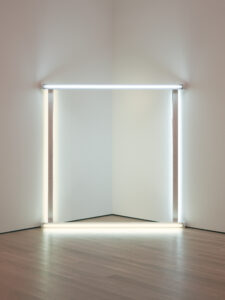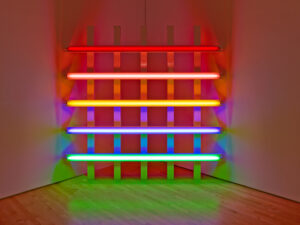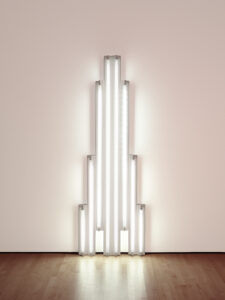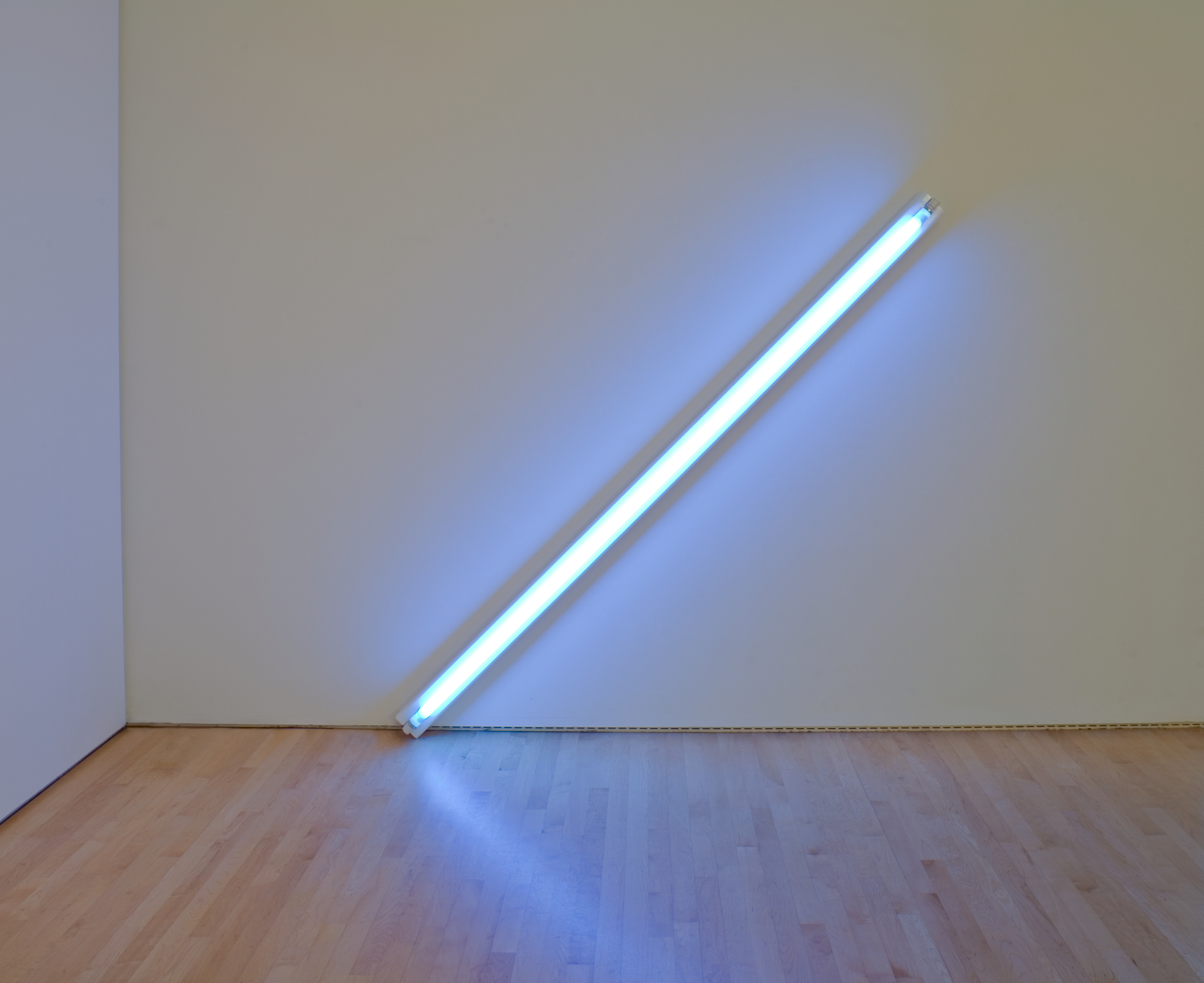After a brief stint at seminary and meteorological training in the military, Dan Flavin pursued his artistic studies in the late 1950s at Columbia University and the New School. By 1961, he had abandoned his early assemblages of found objects and begun his signature work: sculptural installations made from fluorescent light bulbs.
Like the work of his fellow Minimalists, Flavin’s art is clean, industrially produced, and serially repeating. These qualities were developed in opposition to the gestural expressionist painting dominant in postwar American art. The use of ordinary light bulbs also references the twin modernist obsessions with pure technology and everyday life.
By basing his work as much in radiated light as in the bulbs themselves, Flavin set the stage for much of the experience-oriented installation work that continues today.
 Dan Flavinuntitled (to dear, durable Sol from Stephen, Sonja, and Dan) one1969
Dan Flavinuntitled (to dear, durable Sol from Stephen, Sonja, and Dan) one1969 Dan Flavinuntitled (in honor of Leo at the 30th anniversary of his gallery)1987
Dan Flavinuntitled (in honor of Leo at the 30th anniversary of his gallery)1987 Dan Flavin"monument" for V. Tatlin1969
Dan Flavin"monument" for V. Tatlin1969 Dan Flavinuntitled (to Barnett Newman) two1971
Dan Flavinuntitled (to Barnett Newman) two1971 Dan Flavinthe diagonal of May 25, 19631963
Dan Flavinthe diagonal of May 25, 19631963 Dan Flavinuntitled (to Dorothy and Roy Lichtenstein on not seeing anyone in the room)1968
Dan Flavinuntitled (to Dorothy and Roy Lichtenstein on not seeing anyone in the room)1968